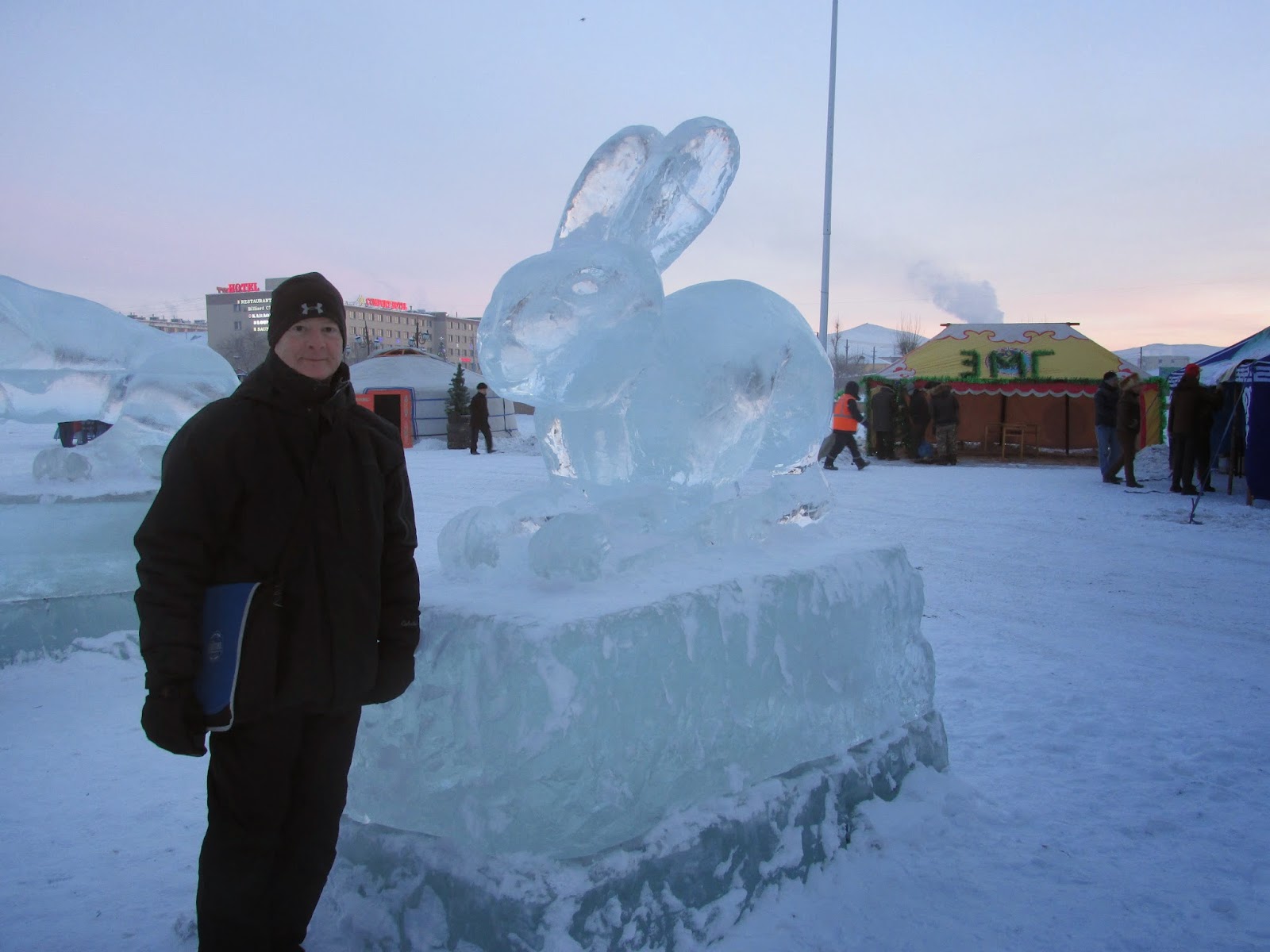This is a family we told you about earlier. The father needed to get his taxi license renewed, but because he could not afford it, the fines grew. He would drive his taxi without a license so he could provide for his family, but was stopped several times by the police and ticketed.

Some donors outside of Mongolia donated the money needed to pay the fees. When we got to the License Office they wanted to charge additional fines but the RS President negotiated and the father got his license. He was so happy when we left the building. His wife told us he cried when he got home. Funds were also donated to help with winter clothes for the kids.
The City has funding to help people buy Gers. They were given 1.2 million tugriks. They found a used one for 450,000 tugs. The rest of the money was used to buy more insulation, stove, ger cover and other supplies needed to set up a home. They are required to show receipts for all purchases related to the home. It takes about 6 to 8 people to set up a ger. I had the privilege of helping put it together. Four of the missionaries helped, along with one of the Old Darkhan members, two neighbors and the Relief Society President. It was quite an experience and it was the coldest day of the season! It was COLD. It took 6 hours, but it was just in time for our first major snow storm last evening! We got about 3 inches that will now be here until May.
As you can see they use a shovel and a big scraper to level the ground.
Then they start with lashing the lattice work together, called khana, for the walls.
Next the roof ring (looks like a wheel) and two pillars are tied together in what is now called the Toono. It is placed facing South to allow them to follow the Sun through the open hole in the roof.
One person holds the Toono in place while the poles, called Uni, are installed . At the end of each Uni is a small rope loop. It is twisted until it can fit tightly on the top of a wall rung to make it all stable.

Then multiple layers of felt or arkh are placed along the walls and secured with rope. Then the roof is covered with 3 to 4 layers of deever made of camel hair, yak hair or wool. In this case they added lightweight, modern insulation material, that looked like brown paper on one side and some kind of thick plastic material on the other side.
See the video on our Facebook page showing how they get the roof materials in place.
The outer white cover is shaped so that there are openings where the door and
roof will be. The white cover must be arranged so that these are in the
appropriate places and then stretched over the entire yurt so that there are not
any creases visible. This white cover is made of water-proof
material which hasn't been available until recently.

The outer straps, khoshlon, are then drawn around. These straps are very important because it actually "strengthens" the entire ger! Two or three straps should be
used at different heights in order to provide equally distributed
stability.

Inside the ger they line the inner walls with rugs most of the time. Here they bought beautiful blue material to go all the way around the inside. The two new owners of the ger are on the left. That is Selengee and her husband, Tururtogoo.
The others are Elder Murat, Brother Nyamsuren, Elder Palmer, Sister Tsevelmaa RS President, and Elder Cannell. Elder Batsaikan missed out and I took the picture.
.jpg) The Director, Teachers and Staff at Sun Child School, where we were teaching English, made beautiful Mongolia traditional Dells for us and then took us to a photo studio for a portrait. What an honor to be presented this wonderful gift. They also presented us with a beautiful painting on cowhide and other gifts.
The Director, Teachers and Staff at Sun Child School, where we were teaching English, made beautiful Mongolia traditional Dells for us and then took us to a photo studio for a portrait. What an honor to be presented this wonderful gift. They also presented us with a beautiful painting on cowhide and other gifts.



















































